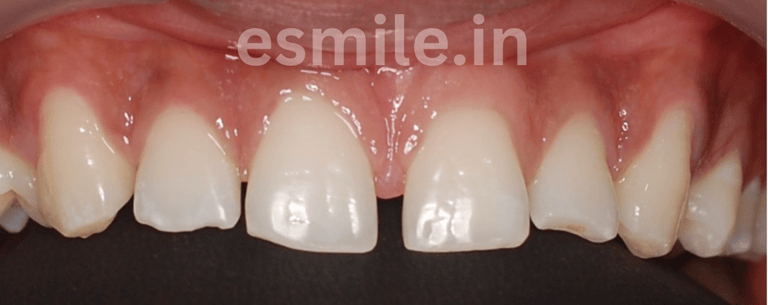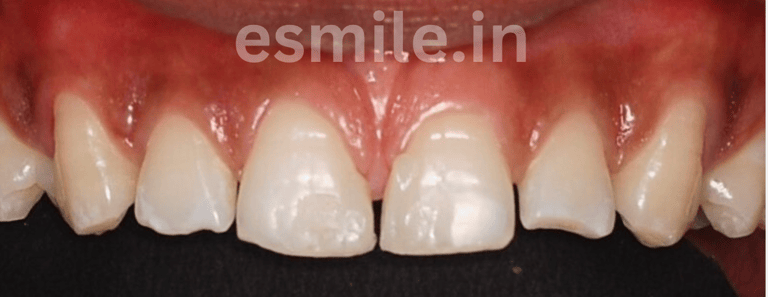Midline spacing in the upper front teeth, also known as diastema, is a condition where there is a gap between the central incisors. This spacing can occur due to various factors such as genetic predisposition, abnormal tooth eruption, or habits like thumb sucking. In some cases, a frenum (the tissue connecting the upper lip to the gum) can be oversized, contributing to the gap. While midline spacing is primarily an aesthetic concern, it can also affect bite alignment and speech.
Additionally, practicing good oral hygiene helps maintain the health of the teeth and gums, which is crucial for sustaining the results if treated by veneers/ full crowns and composite materials. Addressing any underlying habits or issues, such as tongue thrusting or thumb sucking, is also important to prevent recurrence.
Closing a midline gap can be achieved using different dental treatments, depending on the size of the space and the patient's preferences. Options include orthodontic braces or clear aligners, which gradually move the teeth together, or cosmetic solutions like veneers and bonding. For minor gaps, composite bonding is a quick and less invasive option, while larger gaps might require more extensive treatments. Surgery might be considered if the frenum is contributing to the spacing.
To maintain long-term results after closing the gap, a retainer is typically recommended to prevent the teeth from shifting back if treating with orthodontics. Regular dental check-ups are essential to monitor the stability of the closure.
Midline Spacing




Midline Spacing
Chairside mock procedure closing Midline Spacing with composite




